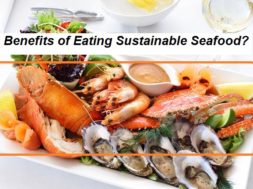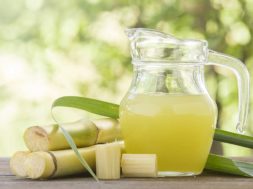As more and more doctors are recommending seafood, it has become difficult to take into consideration the sustainability and ecosystems associated with fishing.
What is a sustainable fish? Does the risk associated with fishing exceed the health benefits of fish? What one should eat, raised fish or wild fish? Well, there can be a number of questions where one can get lost. So, let’s understand what are the benefits of eating sustainable fishes?
1. They are healthy
Numerous sustainable fishes are high in protein, nutrients, minerals, and heart-sound omega-3s while containing low measures of destructive synthetic chemicals. Overfish fish, for example, Salmon and Tuna, as a general rule, contain Mercury, PCBs, and contaminants. Bigger fish that are higher up on the food chain will, in general, have more elevated levels of unsafe synthetic chemicals because of bioaccumulation. Thus, sustainable seafood is pure and healthy.
2. You have to spend less money on them
Sustainable fishes such as trout and Arctic char are quite affordable, unlike salmon. You can also buy farm-raised fishes instead of expensive wild-caught fish to save your money.
3. You can consume seafood in the form of fish oil
One can gain the immense benefits of eating seafood by consuming it in the form of supplements and fish oil. The fish oil is obtained from fishes that are caught to feed humans as well as from the fishes that are caught to feed animals. Buying sustainable fish oil and supplements not only benefits your health but also benefits the ocean’s ecosystems.
4. It will help you support local farmers
Local farmers survive on small scale fisheries, unlike big commercial fishing companies that can hunt fishes in large amounts using modern gears and fleets. By choosing sustainable seafood and third-party certified products, you will help poor farmers to earn their living.
Is it wise to stop eating fish?
Several people claim that one should stop eating fish as the oceans are getting depleted of marine life. We think it is not the solution because several fishermen are dependent on fishes for their livelihood plus fish is packaged with a lot of health benefits. They are high in nutrients, vitamins, minerals and high-quality. They contain omega-3 fatty acids, which is vital for a healthy body and reduces the risk of disease such as heart attacks.
They boost brain health, prevent depressions, reduce the risk of autoimmune diseases, and can improve sleep quality and many more.
Fish is a delicious food having a lot of health benefits. So, instead of taking a drastic step, you must take a certain step that can benefit both the environment’s being and human health. The best way to achieve this is to start looking for sustainable seafood.
How to check if the seafood you are buying is sustainable or not?
Sustainable fish has become an intriguing issue in the previous decade because of worries of overfishing and seabed harming fishing practices. For fish to be described as sustainable, numerous elements are considered like what sort of feed is given to the fish if it is cultivated raised, ecological effect of fishing, angling strategies, and current stock of the fish, etc.
There are numerous sustainable seafood certifications and programs that work in collaboration with fisheries, farms, and companies to promote sustainable seafood practices and to guarantee a protected, solid and responsible fish supply. You can check for these certifications when you are going to buy groceries. You can also look in for sustainability options when you are going to eat at a nearby restaurant.
According to the report of the international union for conservation on wild fishes, more than 85 percent of the world’s fisheries are completely misused. So, picking reasonably cultivated fish lessens the weight on wild fisheries and permits them to reproduce.
At last, seafood is a wonderful source of protein, omega 3 fatty acids, but to create the right balance among the fish, humans, and oceans nothing is better than opting for sustainable seafood choices.





